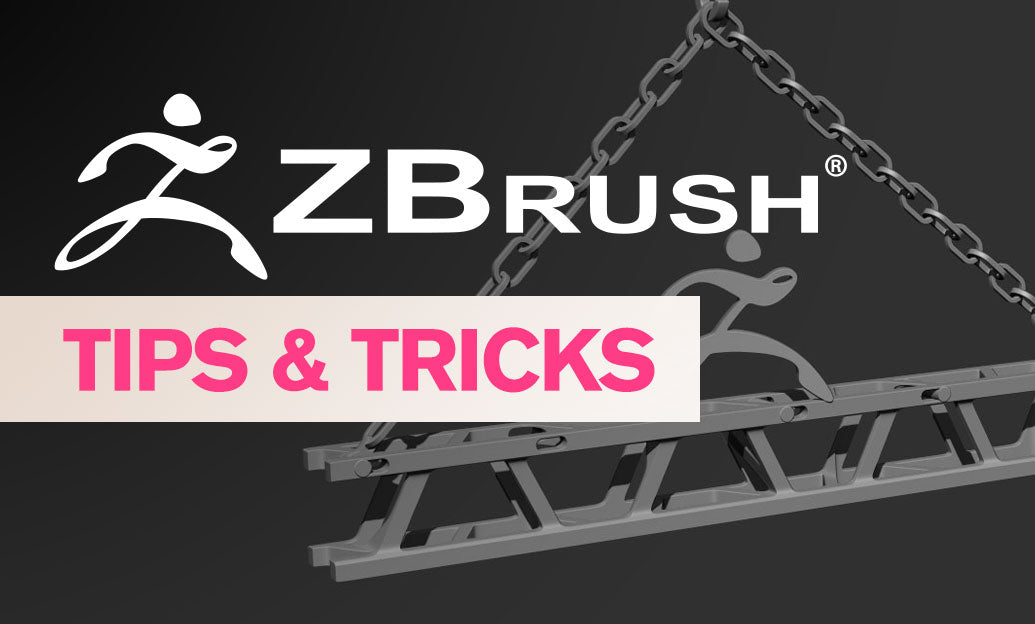Your Cart is Empty
Customer Testimonials
-
"Great customer service. The folks at Novedge were super helpful in navigating a somewhat complicated order including software upgrades and serial numbers in various stages of inactivity. They were friendly and helpful throughout the process.."
Ruben Ruckmark
"Quick & very helpful. We have been using Novedge for years and are very happy with their quick service when we need to make a purchase and excellent support resolving any issues."
Will Woodson
"Scott is the best. He reminds me about subscriptions dates, guides me in the correct direction for updates. He always responds promptly to me. He is literally the reason I continue to work with Novedge and will do so in the future."
Edward Mchugh
"Calvin Lok is “the man”. After my purchase of Sketchup 2021, he called me and provided step-by-step instructions to ease me through difficulties I was having with the setup of my new software."
Mike Borzage
Top 5 Innovative Applications of xNURBS in Engineering Design
November 06, 2024 5 min read


In modern engineering, the ability to model complex surfaces with precision is crucial. xNURBS technology harnesses advanced Non-Uniform Rational B-Splines (NURBS) to revolutionize surface modeling. This article explores five cutting-edge applications of xNURBS across various engineering fields.
Automotive Design and Aerodynamics
The automotive industry thrives on innovation, where the integration of aesthetics and performance defines success. xNURBS greatly enhances car body designs by enabling the creation of smooth, high-quality surfaces that are both visually striking and aerodynamically efficient. Designers can manipulate surfaces with a level of flexibility and precision that was previously unattainable, refining every curve and contour to meet exacting design specifications.
Improving aerodynamic performance is not just about aesthetics; it is critical for efficiency, stability, and fuel economy. xNURBS ensures precise surface continuity, which is essential for reducing air resistance. By achieving seamless transitions between various sections of the vehicle's bodywork, engineers can minimize drag coefficients, leading to enhanced performance and reduced emissions.
Moreover, xNURBS reduces the need for extensive design iterations. In traditional design processes, achieving the desired surface quality might require multiple adjustments and revisions. With xNURBS, designers have the tools to make real-time, flexible surface manipulations, significantly shortening the development cycle. This reduction in time and resources not only accelerates time-to-market but also allows for more innovation within a given timeframe.
- Enables precise control over complex geometries, allowing for innovative design solutions.
- Facilitates seamless integration of design and engineering requirements, enhancing collaboration between teams.
- Reduces prototype development time, leading to cost savings and increased efficiency.
Aerospace Engineering and Fluid Dynamics
Aerospace engineering demands the highest levels of precision and efficiency. The design of aircraft components must consider numerous factors, including aerodynamic performance, structural integrity, and weight optimization. xNURBS allows engineers to design complex aircraft components with optimal aerodynamic properties, pushing the boundaries of what's possible in aircraft design.
By enabling the modeling of seamless surfaces for fuselages and wings, xNURBS contributes directly to the performance and safety of aircraft. Smooth surfaces are essential for optimal airflow, reducing turbulence, and improving fuel efficiency. Engineers can create intricate designs that balance aerodynamic efficiency with structural requirements.
Accurate geometric representations are crucial for simulations and analyses of airflow. Computational Fluid Dynamics (CFD) simulations rely on precise models to predict how air will interact with the aircraft surfaces. xNURBS provides the necessary tools to create these detailed models, facilitating more accurate simulations. This capability allows engineers to identify and address potential issues early in the design process, reducing the risk of costly modifications later on.
- Models intricate aerodynamic surfaces with high precision, essential for advanced aerospace designs.
- Supports advanced CFD simulations with accurate geometries, improving the reliability of analyses.
- Enables exploration of unconventional aircraft designs, fostering innovation in the industry.
Consumer Electronics and Ergonomic Products
In the fiercely competitive domain of consumer electronics, product design is a key differentiator. Devices must not only perform well but also connect with users on an emotional level through their design. xNURBS empowers designers to craft sleek and ergonomic shapes for handheld devices, meeting the demand for products that are both functional and aesthetically compelling.
Integrating aesthetic appeal with functional design requirements is a complex challenge. Devices need to accommodate internal components while maintaining a form factor that appeals to consumers. xNURBS allows for advanced surface modeling, enabling designers to seamlessly blend different elements of a product. This capability leads to innovative designs that optimize space, improve usability, and enhance the overall user experience.
The technology significantly streamlines the prototype development process. Rapid iteration is crucial in consumer electronics, where trends evolve quickly, and time-to-market can make or break a product's success. With xNURBS, designers can quickly adjust designs in response to testing and feedback, reducing development cycles and associated costs.
- Facilitates rapid prototyping and iteration, essential in fast-paced markets.
- Enables the creation of complex, organic shapes that improve ergonomics and usability.
- Helps in integrating multiple functional elements into a cohesive design.
Medical Device Design and Biomechanics
The medical industry is increasingly moving toward personalized medicine, where treatments and devices are tailored to individual patient needs. xNURBS plays a critical role in developing patient-specific implants with organic, complex geometries. By accurately modeling the unique anatomical structures of patients, it enhances the compatibility and comfort of medical devices.
For prosthetics and implants to function effectively, they must precisely match the patient's physiology. xNURBS enables detailed surface modeling that captures the nuances of anatomical structures. This precision is vital not only for comfort but also for the performance and longevity of the device.
In surgical planning, the ability to model anatomical structures with high accuracy allows surgeons to plan procedures more effectively. Detailed models facilitate better communication among medical teams and can improve surgical outcomes. xNURBS provides the necessary tools to create these models, contributing to advancements in medical technology and patient care.
- Enables creation of custom-fitted implants and prosthetics, improving patient quality of life.
- Supports detailed anatomical modeling for surgical planning, enhancing procedural precision.
- Facilitates collaboration between medical professionals and device manufacturers.
Architectural Engineering and Free-Form Structures
Architecture has always been a blend of art and science, and modern trends increasingly favor bold, unconventional designs. xNURBS provides architects and engineers with the tools to create innovative architectural facades with complex curves and free-form structures. This technology expands the possibilities of what can be constructed, pushing the boundaries of architectural design.
Constructing non-traditional shapes introduces several structural challenges. Ensuring that these innovative designs are not only visually stunning but also structurally sound requires precise modeling and analysis. xNURBS allows architects to model complex forms accurately, enabling engineers to analyze and address potential structural issues effectively.
Merging artistic vision with engineering practicality is often a delicate balance. xNURBS bridges this gap by providing advanced modeling capabilities that satisfy both creative desires and practical constraints. Architects can explore bold new ideas knowing that they have the tools to bring them to reality without compromising structural integrity.
- Facilitates the design of complex, free-form structures that stand out in the built environment.
- Overcomes structural challenges by providing precise models for engineering analysis.
- Enhances collaboration between architects and engineers, ensuring cohesive project development.
Conclusion
The impact of xNURBS on enhancing design capabilities across industries is profound. By leveraging advanced surface modeling techniques, it empowers professionals to tackle complex design challenges with confidence and precision. The technology not only improves efficiency and accuracy but also opens up new avenues for innovation.
In automotive design, xNURBS contributes to the creation of vehicles that are both beautiful and aerodynamically efficient. In aerospace engineering, it enables the development of aircraft components that meet the highest standards of performance and safety. In consumer electronics, it facilitates the rapid development of products that combine form and function in novel ways.
In medical device design, xNURBS plays a vital role in advancing personalized medicine, improving patient outcomes through customized solutions. In architectural engineering, it allows for the realization of ambitious architectural visions, marrying aesthetics with practicality.
The role of advanced surface modeling in driving innovation cannot be overstated. As industries continue to evolve, the complexity of challenges faced by engineers and designers increases. xNURBS provides the tools necessary to meet these challenges, enhancing the capabilities of professionals across fields.
Looking ahead, xNURBS is poised to become a standard tool in tackling complex engineering challenges. Its versatility and effectiveness position it as a key component in the future of design and engineering. By continuing to innovate and expand its capabilities, xNURBS will play an integral role in shaping the products and structures of tomorrow.
Also in Design News

ZBrush Tip: Mastering ZBrush Rotation Tool for Precise Model Adjustments
April 03, 2025 2 min read
Read More
Revit Tip: Enhance Energy Efficiency with Revit Solar Analysis Tools
April 03, 2025 2 min read
Read More
AutoCAD Tip: Optimizing AutoCAD Workflow with Effective Use of Drawing Properties
April 03, 2025 2 min read
Read MoreSubscribe
Sign up to get the latest on sales, new releases and more …


